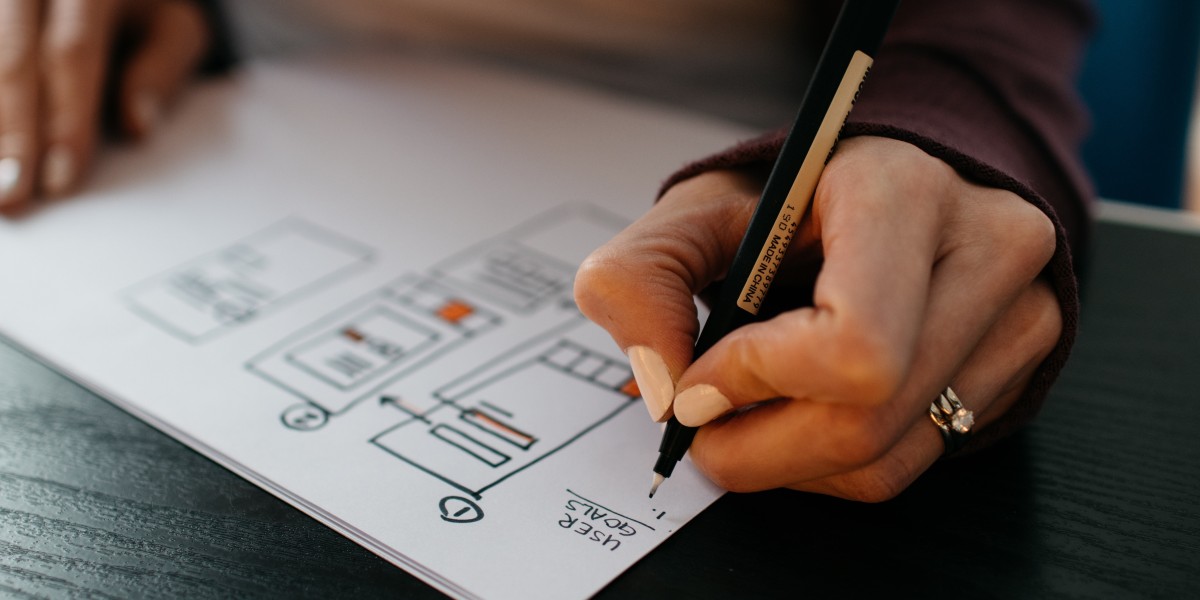Skeuomorphism, once the darling of early digital interfaces, was declared dead when flat design swept through tech in the mid-2010s. In a rush toward minimalism, shadows disappeared, textures were stripped, and interfaces became clean, crisp, and highly abstracted.
But something interesting is happening in the design world today: skeuomorphism is making a comeback. Not in its original, hyper-realistic form, but as a refined, intentional tool for creating digital tangibility—a way to make virtual experiences feel more human, intuitive, and tactile.
This time, it's not nostalgia. It’s strategy.
Let’s explore why skeuomorphism is returning, how it’s evolving, and what it means for the future of user interface design.
What Is Skeuomorphism, Really?
Skeuomorphism refers to a design approach where digital elements imitate their real-world counterparts. Think of a notepad app that looks like lined paper, or an old-school calculator app with beveled buttons and metallic textures.
Its original purpose was simple: to help users understand unfamiliar digital tools by mimicking physical objects they already knew. In the early days of iOS, for example, the bookshelf-style Newsstand or leather-stitched Calendar made smartphones feel approachable and intuitive.
But as users became digitally fluent, this realism felt unnecessary—even clunky. Enter flat design: clean lines, bold colors, and functional abstraction. It was faster, lighter, and modern. And for a while, it dominated everything.
So why is skeuomorphism creeping back in?
The Return of Tangibility in a Screen-Based World
In today’s hyper-digital environment, where everything from banking to therapy happens through a screen, users are craving more tactile, “real-feeling” digital experiences. Flat design, while efficient, often lacks warmth and affordance.
That’s where the new wave of skeuomorphism comes in—often referred to as neumorphism, glassmorphism, or soft UI. It draws on subtle shadows, depth, gradients, and texture—not to imitate reality, but to hint at it. The goal is to create interfaces that feel touchable, without looking cartoonishly physical.
We’re not recreating leather notebooks. We’re crafting buttons that feel pressable. Cards that feel liftable. Toggles that feel switchable.
It’s less about realism and more about responsiveness.
What Makes the New Skeuomorphism “Smarter”
This isn’t a return to ornate interfaces dripping in faux-wood and stitched leather. Today’s skeuomorphism is lighter, more flexible, and grounded in modern design systems.
Here’s what sets it apart:
1. Subtlety Over Imitation
Designers are using depth sparingly—small shadows, delicate gradients, soft lighting—to create visual hierarchy and affordance without overwhelming the layout. It’s a visual language of suggestion, not replication.
2. Accessibility and Performance Are Non-Negotiable
Old skeuomorphic designs were often heavy, slow, and inaccessible. The modern approach considers accessibility from the start—maintaining contrast ratios, ensuring readability, and minimizing load times. Soft UI can work with dark mode, WCAG guidelines, and mobile responsiveness.
3. Seamless Integration with Flat Design
Skeuomorphic elements are now often paired with flat design structures. You might see flat typography with raised buttons, or minimalist layouts with tactile sliders. It’s a hybrid—where flat design provides structure and skeuomorphism provides depth.
4. Purpose-Driven Visual Cues
The new skeuomorphism isn’t decorative. It’s functional. Designers use it to guide user behavior—showing which elements are clickable, draggable, or interactive. Every bit of shadow or shine has a reason to exist.
Why Skeuomorphism Works in Today’s UX
Beyond just visual appeal, this return to digital tangibility aligns with deeper UX principles.
1. It Enhances Affordance
Affordance refers to how intuitively a user understands what an element does. A raised button signals it can be pressed. A sunken input box invites typing. Skeuomorphic touches make these functions feel natural, especially for users who aren’t digital natives.
2. It Reduces Cognitive Load
Visual depth helps users navigate interfaces without overthinking. It creates intuitive paths and reduces hesitation. In a world of short attention spans, that’s powerful.
3. It Feels More Human
Subtle realism adds warmth. It brings personality back to interfaces that have become overly sterile. This emotional connection improves user satisfaction and engagement.
4. It Supports Emerging Interactions
As AR/VR, foldables, and spatial computing gain ground, flat design falls short in representing spatial relationships. The tactile cues of skeuomorphism are better suited to immersive, dimensional environments—making them future-ready.
Examples of Smart Skeuomorphism in the Wild
Modern brands are already embracing this new wave of skeuomorphic influence—often so subtly, you might not even realize it’s happening.
Apple’s iOS and macOS: The return of translucency, shadows, and depth in elements like control centers and system cards is a clear shift from the ultra-flat aesthetic.
Google Material You: While rooted in flat design, Material You uses dynamic shadows and elevation to indicate interaction states and hierarchy.
Notion & Linear: These productivity tools maintain minimalist interfaces but add interactive touches that feel tangible—highlight states, gentle shadows, collapsible sections.
Even UI kits like Clay, Untitled UI, and SkeuoUI have risen in popularity, offering designers a library of soft, tactile components.
How to Use Skeuomorphism Without Going Overboard
Bringing digital tangibility into your interface design doesn’t mean reverting to early-2000s design language. Here's how to use it strategically:
1. Focus on Interactivity
Use depth and texture to emphasize clickable or draggable elements—not for static decoration. Shadows, glows, and subtle transitions should communicate function.
2. Prioritize Legibility and Contrast
Soft UI elements can blur boundaries if not carefully implemented. Always check color contrast ratios and text visibility, especially in varying lighting modes (light/dark).
3. Start with Components, Not Layouts
Introduce skeuomorphic cues in isolated elements—buttons, toggles, cards—before redesigning full page structures. This makes testing and iteration easier.
4. Test with Real Users
Not every audience will respond the same way. Some may love the tactile feel; others may find it distracting. Use usability testing and analytics to measure the actual impact.
5. Combine With Other Modern Practices
Skeuomorphism works best when it supports responsive layouts, clean typography, performance optimization, and accessibility standards. It should complement—not compete with—core UX goals.
The Future of Tangible UI Design
As we move into a world where digital and physical blur—through AR interfaces, foldable screens, and spatial computing—users will demand interfaces that feel real.
Skeuomorphism, reimagined, is a natural bridge between flat abstraction and immersive interaction. It invites users to engage more intuitively with digital environments. And done right, it doesn’t just look good—it feels right.
This isn’t about going back in time. It’s about moving forward with more sensitivity to how humans interact, perceive, and connect through design.
Conclusion
Flat design helped clean up the web. It brought speed, simplicity, and order. But it also stripped out something important—feel. The sense that digital spaces could be warm, intuitive, and touchable.
Today, skeuomorphism is back, but it’s not about decoration. It’s about function, affordance, and emotion. It’s about giving users feedback, clarity, and comfort—without slowing them down.
In a world of infinite screens and instant interaction, design that looks flat may pass. But design that feels real? That’s what people remember.


